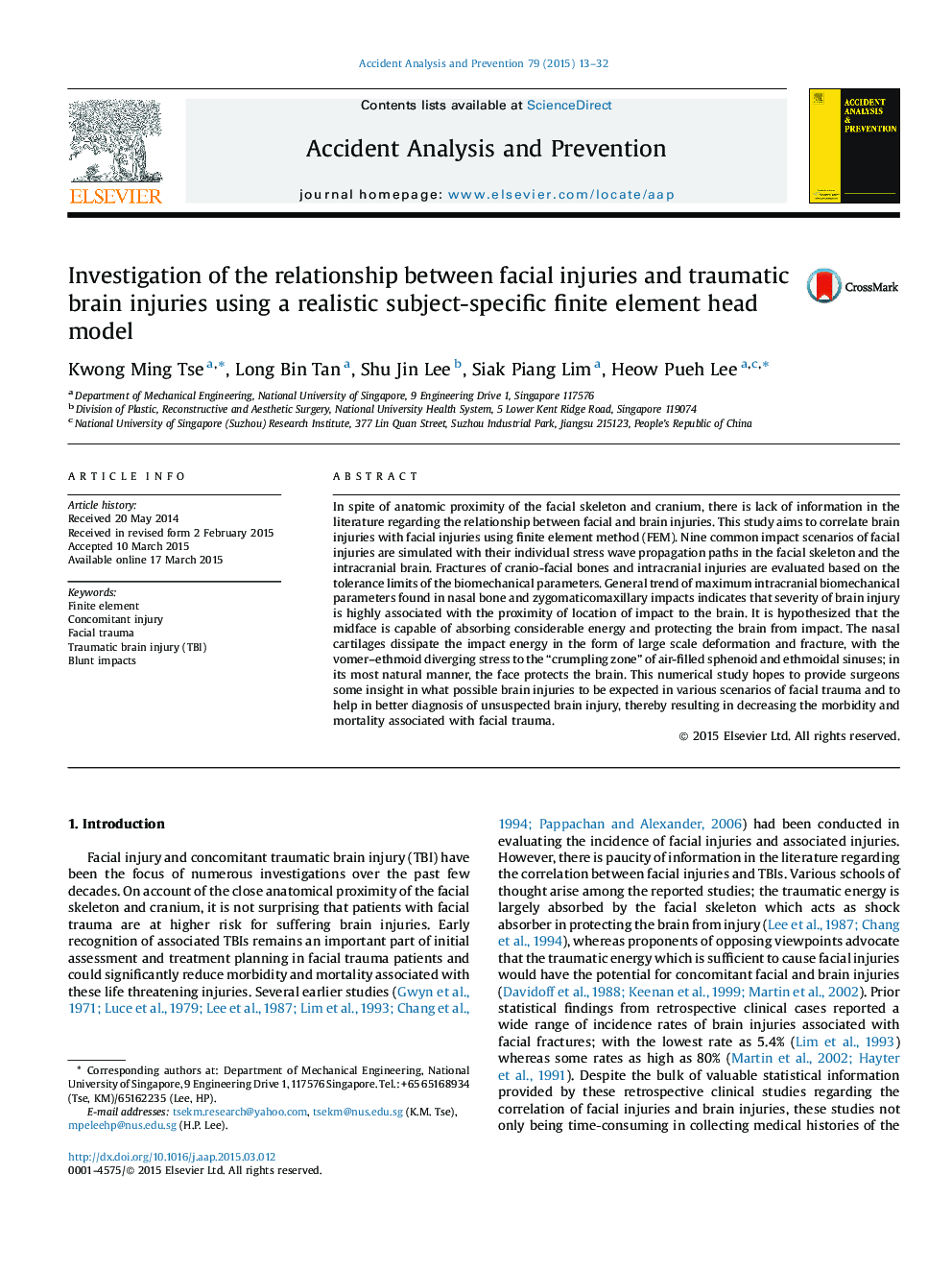| Article ID | Journal | Published Year | Pages | File Type |
|---|---|---|---|---|
| 572161 | Accident Analysis & Prevention | 2015 | 20 Pages |
•We conduct simulations of 9 common impact scenarios of facial injuries.•We study the correlation between facial and brain injuries.•We evaluate the biomechanical metrics of the skeletal skull and intracranial tissues.•Severity of brain injury is highly associated with the proximity of impact location to the brain.•The face protects the brain by absorbing considerable impact energy.
In spite of anatomic proximity of the facial skeleton and cranium, there is lack of information in the literature regarding the relationship between facial and brain injuries. This study aims to correlate brain injuries with facial injuries using finite element method (FEM). Nine common impact scenarios of facial injuries are simulated with their individual stress wave propagation paths in the facial skeleton and the intracranial brain. Fractures of cranio-facial bones and intracranial injuries are evaluated based on the tolerance limits of the biomechanical parameters. General trend of maximum intracranial biomechanical parameters found in nasal bone and zygomaticomaxillary impacts indicates that severity of brain injury is highly associated with the proximity of location of impact to the brain. It is hypothesized that the midface is capable of absorbing considerable energy and protecting the brain from impact. The nasal cartilages dissipate the impact energy in the form of large scale deformation and fracture, with the vomer–ethmoid diverging stress to the “crumpling zone” of air-filled sphenoid and ethmoidal sinuses; in its most natural manner, the face protects the brain. This numerical study hopes to provide surgeons some insight in what possible brain injuries to be expected in various scenarios of facial trauma and to help in better diagnosis of unsuspected brain injury, thereby resulting in decreasing the morbidity and mortality associated with facial trauma.
Graphical abstractFigure optionsDownload full-size imageDownload as PowerPoint slide
